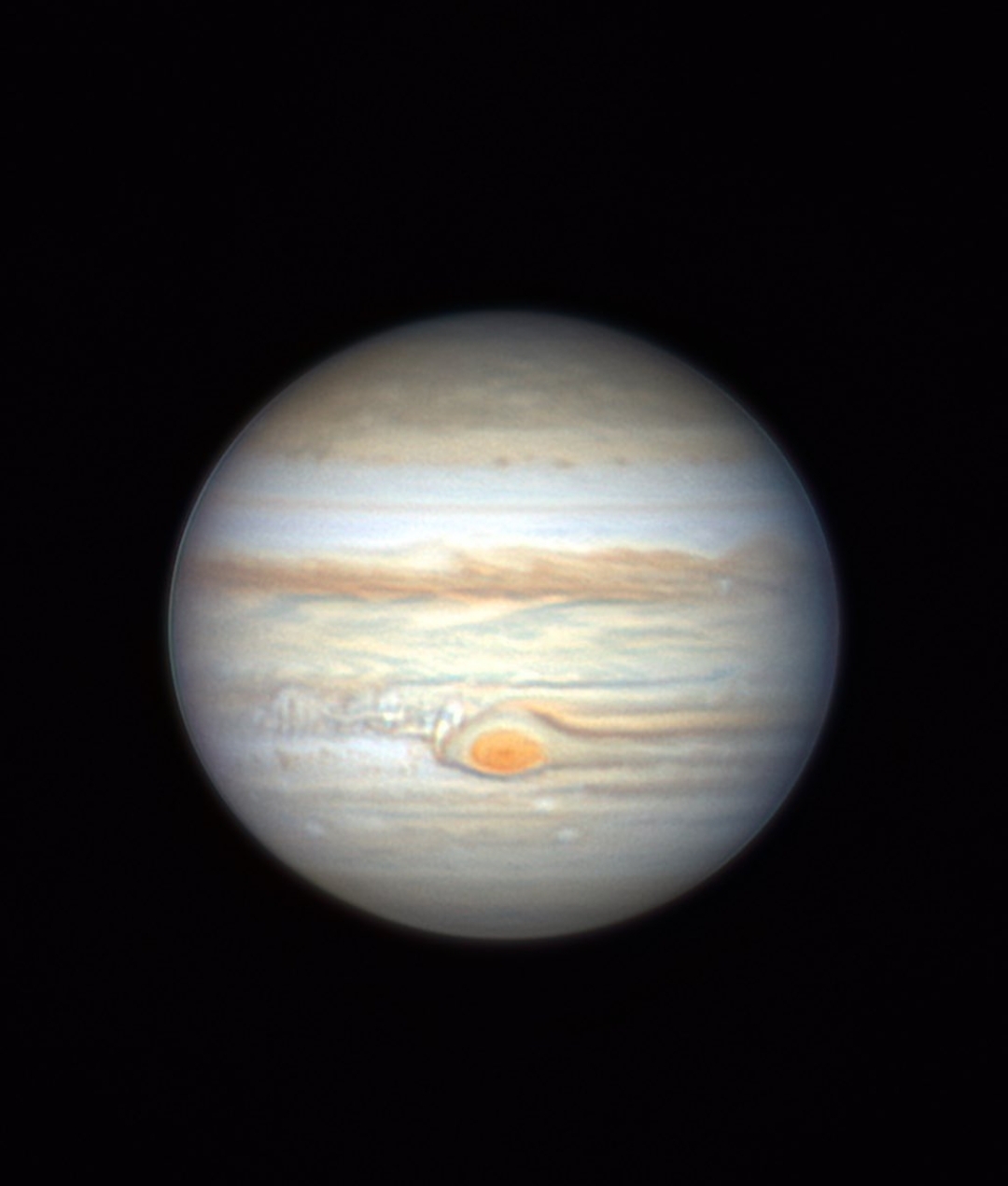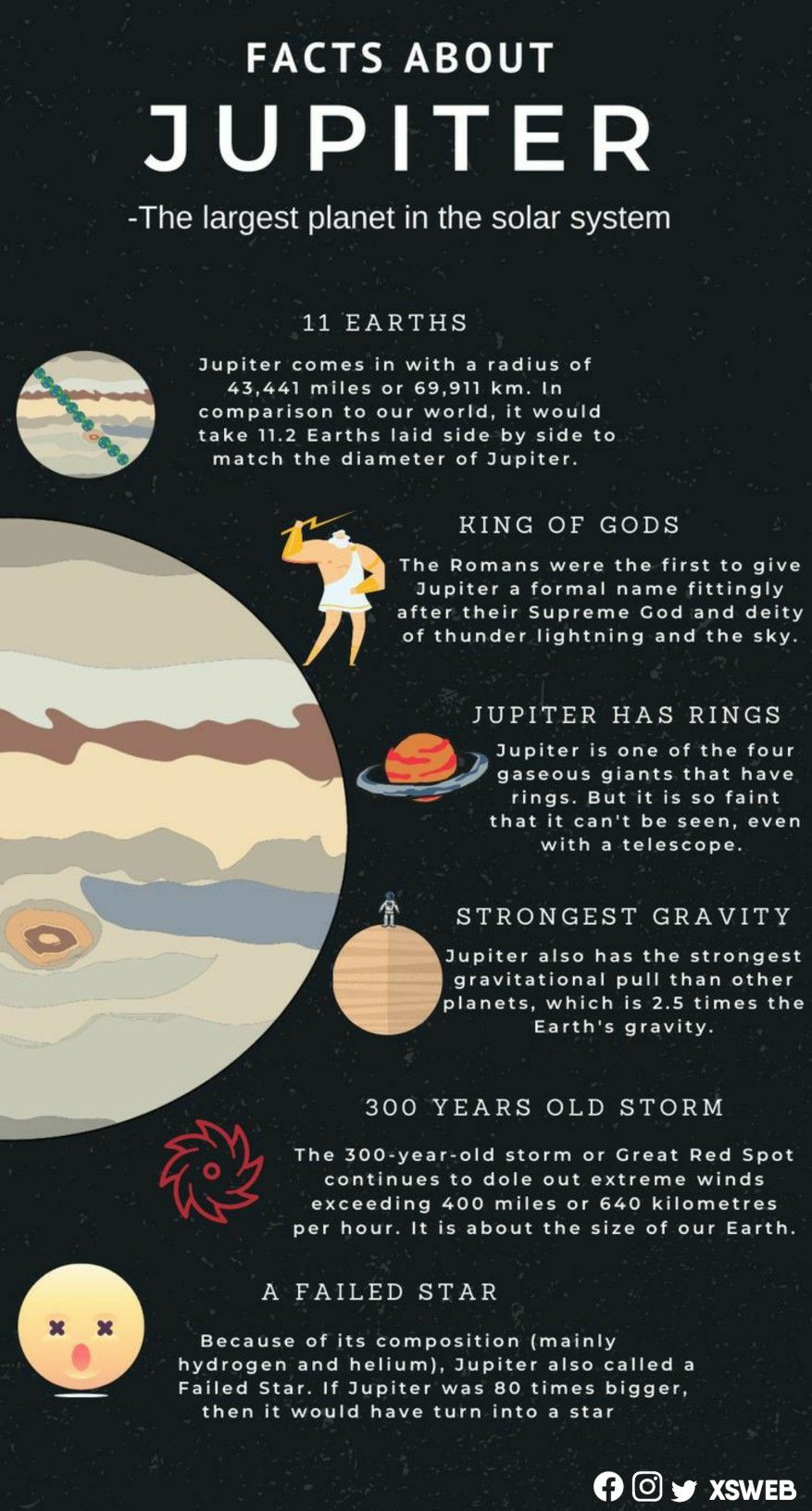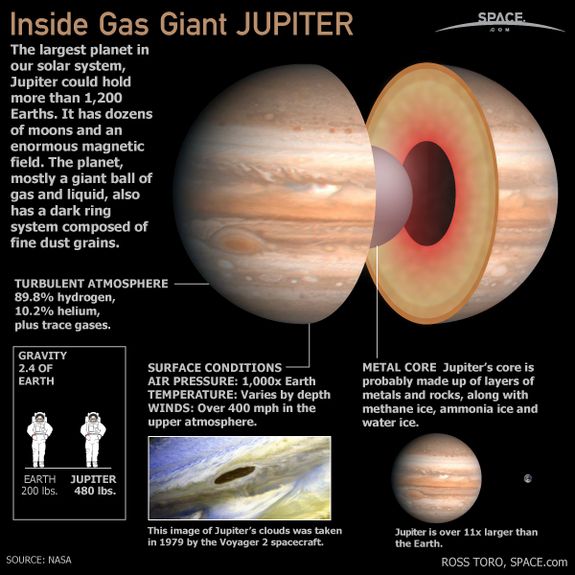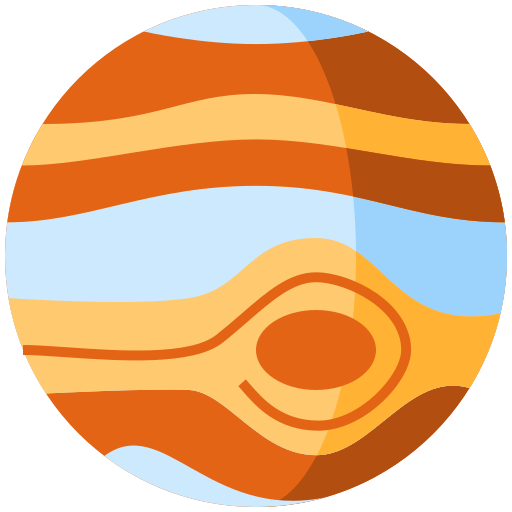Home > Sections > The Universe > Jupiter
Last Updated: 14th June 2023
ARCHIVED ITEM: this page is no longer updated.
Jupiter
Keywords
Jupiter, gas giant, red storm, gravity, asteroid belt, god of thunder, Io, Ganymede, Europa, Callisto, Galileo, Voyager, Juno.
Introduction
The largest planet in the Solar System, Jupiter is a giant gas planet which is easily distinguishable in the night sky. On a good clear day, you can see it with the naked eye, and with a decent telescope, you can view it as it looks in space very well, much like Saturn.
Planet Features
Size: being the largest, Jupiter is 43,441 miles (69,911 kilometres) in diameter - enough for 11 Earths to fit alongside each other - it literally is twice as big as any other celestial object in the Solar System.
Visual Appearance: to the naked eye, it is a ball of striped reds, oranges and browns. Up closer, and you can see that there is a red spot that is actually a raging storm that has been going for at least 300 years (when it was first seen). These stripes are cold windy clouds of ammonia and water.
Structure: the cold windy clouds you can see on Jupiter are only the beginning. Along with the amoonia and water mix, there is hydrogen and helium, and a mix of smaller amounts of gases. The core inside Jupiter is probably (it's not been fully determined yet) made up of metal and rocks, along with ammonia and water ices.
Name: again, being the largest of the planets in the Solar System, only a name that would fit with such a big image was enough. Jupiter is named after the god of thunder, lightning and the sky.
More: It wasn't until the 1600s that we thought we were the only planet with a Moon, hence us calling it the Moon, but Galileo saw four moons around Jupiter upon his discovery. They were called Io, Ganymede, Europa and Callisto. There has since been the discovery of over 75 moons that orbit the giant planet.
Interesting fact: there is no boundary between atmosphere and the ocean of liquified gas in the lower layers of Jupiter. This is due to the tremendous pressure; the gas simply changes in viscosity the deeper you get into the planet.
If you stand on Jupiter, the gravity is 2.4 times that of Earth, so if you weight 100kg here, you will weight 240kg on Jupiter.
Several missions that have passed the planet have taken images of Jupiter. The two Voyager missions that passed the planet took composite images of the various storms and how it looks. In 1979, the Voyager mission showed, for the first time, Jupiter's rings. This means that the four gas giants past the asteroid belt all have rings around them. The current mission around Jupiter is called Juno. It is purposefully orbiting the planet to find out more.
Here is a YouTube video from National Geographic on Jupiter:
Footnotes
[1]Jupiter, as taken by the Hubble telescope, image provided by  NASA.
NASA.
[2]Jupiter seen from a telescope, image courtesy  Rami Ammoun.
Rami Ammoun.




 Saturn
Saturn




